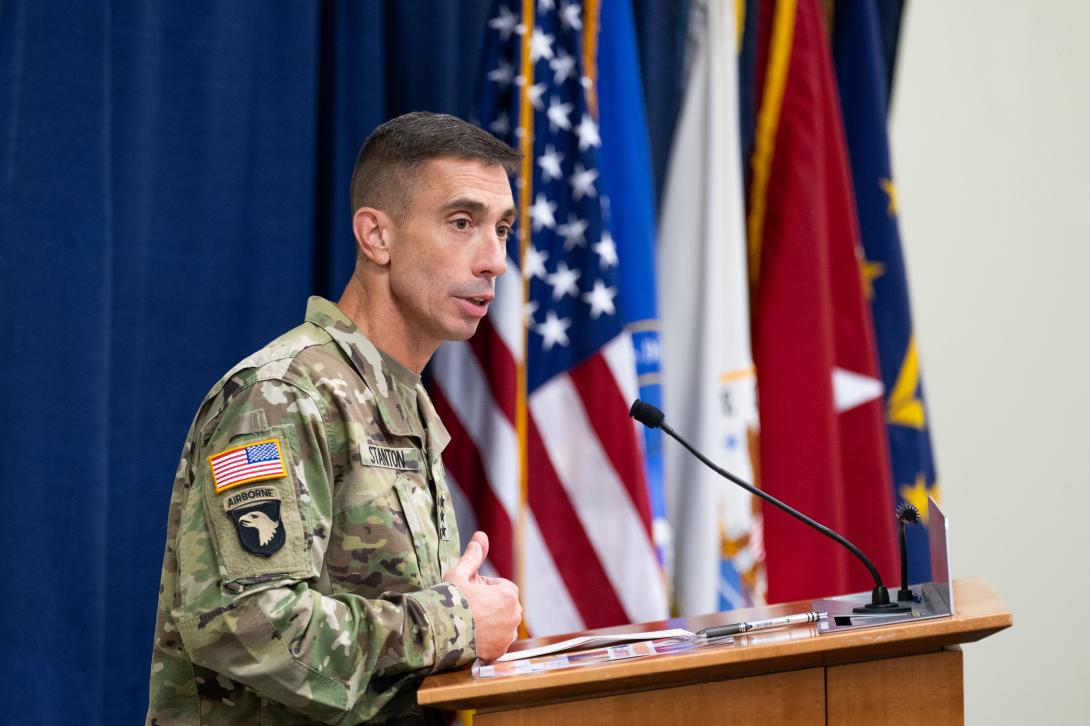Lt. Gen. Stanton Lays Out DISA and JFHQ-DODIN Priorities
Lt. Gen. Paul Stanton, USA, who took over in October as the director of the Defense Information Systems Agency (DISA) and commander of Joint Forces Headquarters-Department of Defense Information Network (JFHQ-DODIN), told SIGNAL Media in an exclusive interview that his priorities for both organizations include readiness, campaigning, continuous modernization and establishing lethality in the cyber arena as a means of deterring attacks.
He listed readiness as priority number one. “We must be ready to do our jobs, and when we think about readiness in a military context, that means that each individual knows her or his responsibilities and is trained effectively in order to execute, but then we combine individuals into organizational constructs that have collective responsibilities, and we also have to validate that collectively we can perform those actions,” he explained. “We have to validate that individuals in collective organizations can execute those tasks. We have to provide the right training mechanisms to ensure that I have confidence that at any given point in time, folks know exactly what they’re supposed to do, and they’re capable of doing it.”
That individual and collective readiness will pertain to all job functions, Stanton indicated. “That applies whether you are designing software, if you are executing defense of routers that sit on the edge of our boundary, or if you’re hunting for the adversary inside our networks. We have to be ready.”
Readiness, of course, directly affects the second priority, campaigning, and requires a shift in thinking. “When we think about campaigning, it’s a series of coordinated events toward an objective. We can’t sit back and let the enemy continue to pummel us with attacks and be principally in a reactionary mode. We have to start leaning forward and taking actions proactively to start imposing costs on our enemy,” he said.
Campaigning also requires communicating and working closely with the various combatant commands. “When we fight wars as the United States of America, we fight them through our combatant commands. So, we have to understand what our combatant command priorities are.”
With those combatant commander priorities in mind, Stanton’s team can better study the threat and determine whether cyber enemies have the intent, tools and capability to impede a combatant commander’s ability to execute the mission. “You have to go through that mission analysis if you’re going to be proactive and deter our adversaries from attempting to achieve effects. It requires thought. It requires resourcing. It requires positioning ahead of time. But when you do that, you can gain and maintain contact with the enemy and force the enemy to think hard about whether they want to attack the targets that are important to you. That’s establishing deterrence.”
The general stressed the need to impose costs on cyber adversaries. DISA is responsible for building a defensible network, and JFHQ-DODIN is responsible for defending the network. But that requires a close relationship with those who conduct offense. “We need to impose costs on the adversary to deter the adversary. If and when I establish contact with the enemy, I want to maintain contact with the enemy, and so a tighter relationship, which we are currently establishing, with the forces that conduct offensive cyber operations is critically important.”
We can’t sit back and let the enemy continue to pummel us with attacks and be principally in a reactionary mode. We have to start leaning forward and taking actions proactively to start imposing costs on our enemy.
For continuous modernization, Stanton said his primary goal is “to build what the combatant commands need.”
“As a Defense Information Systems Agency, we build things, we design things, we integrate things, we buy things. We can't just buy things. We can't just build things. We have to present systems of systems that solve functionally relevant problems in support of the combatant commander. And we have to do it in a timely fashion that meets that requirement. Combatant commanders have to focus on warfighting. We have to be a combat support agency that gives them what they need.”
Continuous modernization also will affect training for readiness. “The rate of change of technology and the rate of change of the enemy is accelerating. And the way we have done business historically just isn’t going to work. We will be in a continuous state of making modifications to our capabilities and, therefore, to how we train in order to use them effectively. And that applies to how we build capabilities. That applies to how we execute operations in the cyberspace warfighting domain,” he said.
For more from Lt. Gen. Stanton, read the May issue of SIGNAL Magazine and register for TechNet Cyber in Baltimore, May 6-8, where he will be a keynote speaker.
Nuray Taylor contributed to this report.






Comments